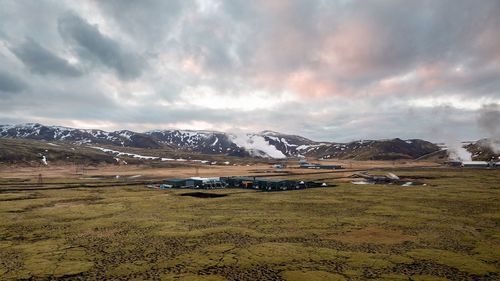Some things you just don’t see coming. Defections from the Tory party may be very on trend: just last month it was Dan Poulter. Or Dan Who? to his friends. But when Natalie Elphicke took her place right behind Keir Starmer on the Labour benches for prime minister’s questions there were open mouths on both sides of the Commons. Penny Mordaunt had to do a quick double-take. Could it be? Surely not. It was. She dashed to the speaker’s chair to warn the prime minister.
Elphicke is no ordinary defector. Not some Tory wet like Dripping Dan. So centre-right one nation that she may as well have been Labour anyway. Natalie is about as far to the right as you can get. Not only that, but with an unpleasant backstory too.
A woman who defended her husband, Charlie, the previous MP for Dover, until she inherited the constituency after he had been convicted of three charges of sexual assault. Not the best of looks. Natalie was even suspended from the Commons after she was found to have tried to influence the judge presiding over his trial.
Then there are her politics. Natalie was about the only MP to criticise Marcus Rashford for campaigning for free school meals. The only good kid is a hungry kid. Why couldn’t they just get a job and feed themselves? Footballers should know their place and stick to football. It goes to say that Natalie was also a paid-up member of the European Research Group. A diehard advocate of the hardest possible Brexit that would do the most damage to the UK.
She has never yet met a foreigner she didn’t want to deport. Every time a small boat lands in her constituency, she projectile vomits. Only last year she was writing about how Labour couldn’t be trusted not to get soft on refugees. Stay strong, Nat! And it goes without saying she has never got over the removal of Boris Johnson from No 10.
Quite how Natalie explains her defection to herself is a mystery. What does she tell her Dover constituents? Or even her friends? Assuming she still has any. Does she just say her career has always been a bit of a joke? Labour the unexpected punchline. Is she hoping for a safe seat at the next election? Or maybe even a peerage. Labour insist not. But things do change.
Understandably, then, many on the Labour benches looked a little queasy to find Elphicke in their ranks. At best they grinned and bore it. At worst they shuffled away to create a cordon sanitaire. There was certainly no rush to pick up their phones and tweet their excitement about their newest recruit. Most would have been more than happy for Nat to have been refused entry to the Labour party. A polite reminder that there were plenty of spare seats among the independents and the has-beens. Next to 30p Lee.
But Keir Starmer is made of sterner stuff. He keeps telling us that the Labour party has changed and he’s as good as his word. Even the undesirables are now welcome. Better a sinner that repenteth and all that. Anything that chips away at Tory morale is fine, as far as Keir is concerned. A quick win is quick win. Never mind the politics, feel that Tory majority getting chipped away.
At the current rate of attrition, Rishi will be running a minority government within a matter of weeks. And Elphicke’s welcome to the Labour camp shows that no one will be turned away. Jacob Rees-Mogg, Mark Francois and Bill Cash. Feeling betrayed by Brexit? Come and find a shoulder to cry on. Anyone thinking they may lose their seat in a few months, then jump ship. You can tell that Jeremy Hunt and Michael Gove must be really tempted.
Rishi Sunak didn’t look that bothered to be told by Starmer that Elphicke was now an ex-Tory. Maybe the news had yet to really register. Rish! is good on denial. He has to be. Otherwise he wouldn’t be able to cope. Once he gives up, the Downing Street bunker will quickly empty. Cue, downfall memes. As it was, Sunak just ignored the whole thing. It hadn’t happened. Nothing had changed. Rish! is visibly falling apart. The man previously untouched by failure is now its embodiment.
PMQs now represents a Theatre of Cruelty, its every second a reminder of Sunak’s own inadequacy. It starts with the cheers that greet his arrival in the Commons. They’ve gone from the ironic to the openly mocking. No one thinks he is doing a good job. No one holds him in any affection. He only gets to keep his job because it would look even worse to sack him so soon before a general election. An election they all know they are going to lose. Gallows humour is all that is left. Dignity long gone.
Everyone knows the score. None more so than the Labour leader. Time was when Starmer was more wary around Rish!. Took him seriously as a political opponent. Now he is almost demob happy. The game of PMQs is just too easy for him. Sunak is just a plaything. A rag doll to be kicked around and punched. Before being discarded.
Starmer began by crowing about the local election results. Rish! looked as if he might start crying before starting to read out the names of all the successful Tory councillors. There are so few, it didn’t take long. Sunak retreated into his safe place: the investigation into Angela Rayner. Keir just smirked. People in glass houses, etc. Had the prime minister forgotten that he had two convictions himself?
After that it was all just fun, fun, fun. All the places where Sunak has fifth homes – the ones we know about – were now under Labour control. So at least he would be safe. Could Rish! think of any of his policies that were actually working? At the current rate of progress it would take 300 years to deport every refugee to Rwanda. Sunak’s comebacks just died a death. Not even his own backbenchers could keep up the pretence that they were enjoying this.
We ended with Sunak unexpectedly blurting out an inconvenient truth. “There is no long-term policy,” he said. Of course there isn’t. Everything is concentrated on short-term survival. The prime minister had been spat out and ground into the dust. You wouldn’t treat an animal like this.






:saturation(1.34)/https%3A%2F%2Fprod.static9.net.au%2Ffs%2F59404a7a-3ec5-454e-83c3-455ebb704fdf)



